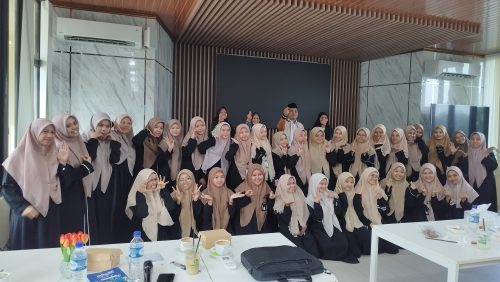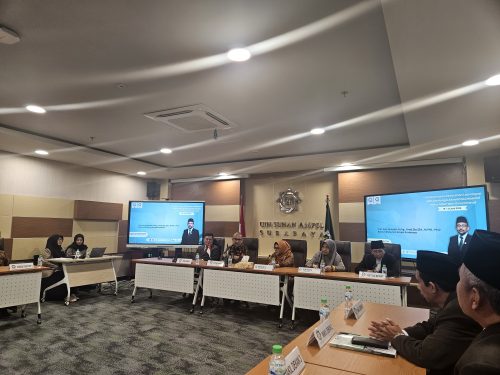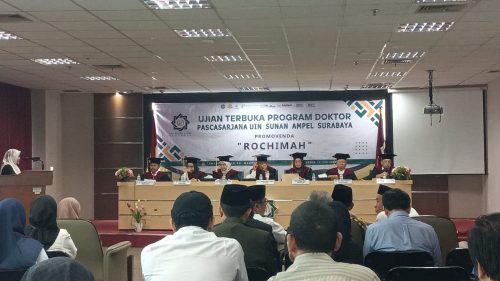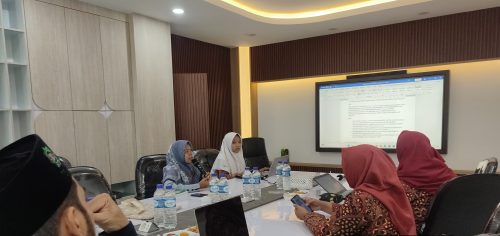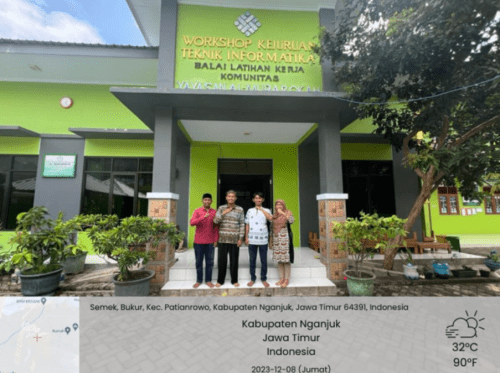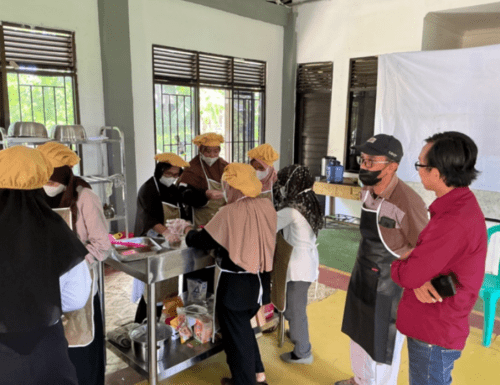BE VIGILANT AGAINST MYCOPLASMA PNEUMONIA
By: Dr. dr. Siti Nur Asiyah, M.Ag.
Head of UINSA Surabaya Primary Clinic
 In recent times, the government through the Ministry of Health of the Republic of Indonesia has urged healthcare facilities and the entire community to be vigilant against various diseases, particularly in light of the increasing cases worldwide. Among the diseases that need attention are COVID-19 and Mycoplasma pneumonia. It should be noted that Mycoplasma pneumoniae is not a new type of bacteria. This bacterium is the most common germ causing respiratory tract infections, especially before the COVID-19 pandemic.
In recent times, the government through the Ministry of Health of the Republic of Indonesia has urged healthcare facilities and the entire community to be vigilant against various diseases, particularly in light of the increasing cases worldwide. Among the diseases that need attention are COVID-19 and Mycoplasma pneumonia. It should be noted that Mycoplasma pneumoniae is not a new type of bacteria. This bacterium is the most common germ causing respiratory tract infections, especially before the COVID-19 pandemic.
Mycoplasma pneumonia is a bacterial infection of the respiratory tract caused by the bacterium Mycoplasma pneumoniae. Mycoplasma pneumonia is sometimes considered a relatively mild infection and takes a long time to spread, hence the term “walking pneumonia.” However, the symptoms of this disease can last a long time and can progress to severe pneumonia if lung inflammation is not promptly and properly treated.
Mycoplasma pneumoniae can infect anyone but is more likely to affect people who:
- Are between 5-40 years old
- Smoke
- Have chronic respiratory diseases such as asthma, cystic fibrosis, cancer, or chronic obstructive pulmonary disease (COPD)
- Take long-term immunosuppressive drugs, for example, due to autoimmune diseases or organ transplants
- Live in crowded and confined areas such as dormitories, schools, colleges, and others.
The symptoms of Mycoplasma pneumoniae infection are usually mild, unlike typical pneumonia symptoms, hence it is also called atypical pneumonia. Nevertheless, the symptoms can last for weeks or months. Mycoplasma pneumoniae can cause infections in both the upper and lower respiratory tracts with symptoms such as:
- Sore throat
- Fatigue or weakness
- Mild fever
- Cough, starting with a dry cough that may develop into yellow-green phlegm-producing cough
- Chest pain due to persistent coughing
- Headache
In children under 5 years old, Mycoplasma pneumoniae infection can cause several symptoms, including:
- Runny or stuffy nose
- Watery eyes
- Sore throat
- Sneezing
- Wheezing or whistling sound while breathing
- Vomiting
- Diarrhea
If the symptoms are mild, no specific treatment is needed, but several measures can be taken to alleviate the symptoms, including:
- Drinking plenty of water to thin mucus in the throat for easy removal.
- Taking fever and pain relievers.
- Avoiding air pollution.
- Getting enough rest.
Generally, Mycoplasma pneumoniae infection can resolve on its own with self-care at home. However, if the symptoms are severe, patients need to receive medical treatment, either outpatient or inpatient, depending on the condition of each patient.
This disease can be transmitted through respiratory droplets when an infected person coughs or sneezes. Therefore, preventive measures should be taken, including:
- Washing hands with soap and water or using hand sanitizer containing alcohol if soap and water are not available.
- Wearing masks, especially when coughing or sneezing.
- Avoiding contact or proximity to sick people, especially those showing flu-like symptoms.
- Boosting the immune system by consuming nutritious food and getting enough rest.
- Regularly cleaning toys or items frequently used by children.
For patients with Mycoplasma pneumonia infection, steps that need to be taken to prevent the spread of the disease to others include:
- Practicing proper cough and sneeze etiquette by covering the mouth and nose with a tissue when coughing or sneezing, then disposing of the tissue in the trash.
- Limiting going outside if experiencing flu-like symptoms such as coughing, runny nose, or sneezing.
- Wearing masks and practicing cough and sneeze etiquette when necessary to go outside.
- Washing hands regularly.
- Consulting complaints to a doctor and taking prescribed medications according to the instructions.
Vigilance against this disease needs to be done collectively to avoid a surge in cases and to improve overall health.
References:
- Bharat Bajantri, Sindhaghatta Venkatram , Gilda Diaz-Fuentes , Mycoplasma pneumoniae: Infeksi yang Berpotensi Parah, Jurnal Penelitian Kedokteran Klinis, Vol.10, No. 7, Juli 2018, 535-544
- Dewi Wijaya1 , Diah Handayani1 , Cahyarini , Feni Fitriani Taufik, Pneumonia Atipik Akibat Mycoplasma Pneumoniae. J Respir Indo Vol. 35 No. 2 April 2015, 124-134
- Lin Tong, Shumin Huang, Chen Zheng, Yuanyuan Zhang and Zhimin Chen, Refractory Mycoplasma pneumoniae Pneumonia in Children: Early Recognition and Management, J. Clin. Med, Vol.11, No. 2824, 2022,1-13
- Peng Wen, Min Wei, Xue Guo1 and Yu-Rong Xu1, Mycoplasma pneumoniae infection mimicking tuberculous pleurisy in a young woman: a case report and literature review, Journal of International Medical Research, Vol.48, No. 4, 2020, 1–9


